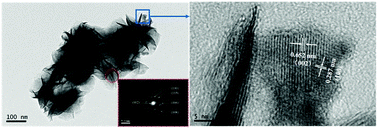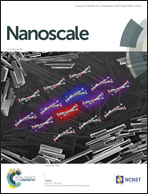Synthesis of ultrathin WSe2 nanosheets and their high-performance catalysis for conversion of amines to imines†
Abstract
Tungsten diselenide (WSe2) is the material with the lowest thermal conductivity in the world. Most physical methods are used for the synthesis of tungsten diselenide. Here, a simple colloidal method is reported for the synthesis of WSe2 nanosheets. The composition, valence, size, morphology and properties of the samples were characterized and measured. Results showed that the obtained WSe2 nanosheets with a thickness of 0.7 nm had strong blue fluorescence. Significantly, the synthesized WSe2 nanosheets exhibited excellent catalytic activity for the aerobic coupling of amines to imines, with 100% yield under visible light irradiation and air atmosphere. As a photocatalyst, it exhibited excellent recyclability, and maintained a high yield after 5 cycles. It was found that this reaction could also happen in the presence of natural light by slightly extending the reaction time. Moreover, H2O was used as a solvent in the catalytic process, avoiding expensive and toxic organic solvents. This work provides an efficient, economical and sustainable process for the synthesis of imines and shows the great potential of WSe2 nanosheets as photocatalysts for organic synthesis.



 Please wait while we load your content...
Please wait while we load your content...